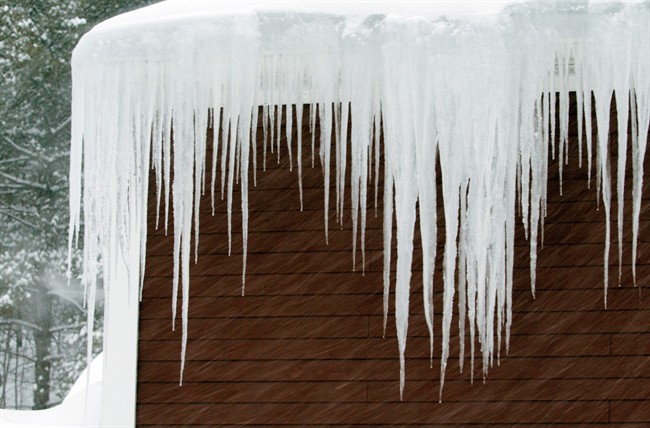A harsh winter has taken a toll on many roofs. Maybe there’s a tell-tale leak, but sometimes problems are harder to spot. When the snow melts, it’s a good time to take stock.

—
IDENTIFYING PROBLEMS
John Galeotafiore, associate director of home improvement testing for Consumer Reports, recommends that homeowners take out a pair of binoculars and check the roof from street level. Roofing contractors also can be hired to inspect the roof.
Do you see any missing shingles? Are some of them curled or cracked? Are there pieces of flashing missing?
Dirty or splotchy shingles also can be a sign of a problem, says Jim Englehart, senior merchant for building materials at Home Depot. “It’s indicative of the granules being worn away,” he said.
Weather-related damage can include ice damming, when water backs up under the shingles, ices and then begins to melt.
High winds can dislodge shingles or the flashing around chimneys or skylights.
—
REPAIR OR REPLACE?
Age is one factor in deciding whether to repair or replace a roof.
“If the roof is about 20 years old and you’re getting leaks, you’re probably going to have to change it,” Galeotafiore said.
You might be able to patch newer roofs if the damage is limited.
“It gets down to esthetics,” Englehart said. “If it’s on the front side of the house I don’t want to patch. The patch is going to be a different colour.”
Sometimes, new shingles can be layered over an existing asphalt roof, saving some labour costs. But no more than two layers total is advised, in part because of the added weight on the home.
—
ROOF TYPES
Most homes in North America have a pitched roof. Asphalt shingles make up a large share of the market, but some roofs are slate, metal or a composite material. Wood shakes and tile also are used.
A lot depends on your esthetics and your budget. “You could spend an extra $30,000 for real slate or wood shakes – or you could get a similar look for much less,” Consumer Reports said.
And then there’s geography. “Different kinds of material will perform better in different climates,” said Bill Good, executive vice-president of the National Roofing Contractors Association.
In the Midwest and Mid-Atlantic, he said, a lot of asphalt shingle is used. Asphalt shingles come in two main types: three-tab shingles, which are a single layer, or laminated or architectural shingles, which are thicker.
But strong sun can take a toll on asphalt roofs, so in Florida and the Southwest, roofs are frequently made of tile, according to the National Roofing Contractors Association. In New England, you see a lot of slate because that’s where it’s quarried, according to Good.
Composite shingles are made to look like slate or wood shakes. “The look would be as close as you could get to the real thing,” said Mark Hansen, vice-president of sales and marketing for DaVinci Roofscapes, based in Lenexa, Kansas. The company uses a high-performance polymer for its roofing materials.
Metal roofs range from steel to copper and other materials, either in panels or in shingles similar in size to asphalt shingles. Good said they last a long time, and “also tend to be reflective, so they can help with energy conservation inside the home.”
Check a roofing material’s weight to make sure it’s OK for your home.
As for cost, asphalt is generally the lowest among roofing options. Slate and copper roofs, for example, can be much costlier.
—
PICKING A CONTRACTOR
Replacing a roof is probably not a job homeowners want to do themselves, experts agree.
Good recommends talking to two or three contractors before deciding on one. Besides comparing prices and warranties, check that the company is insured and has a permanent place of business.
It’s also good practice to ask for references, Good said.


Comments